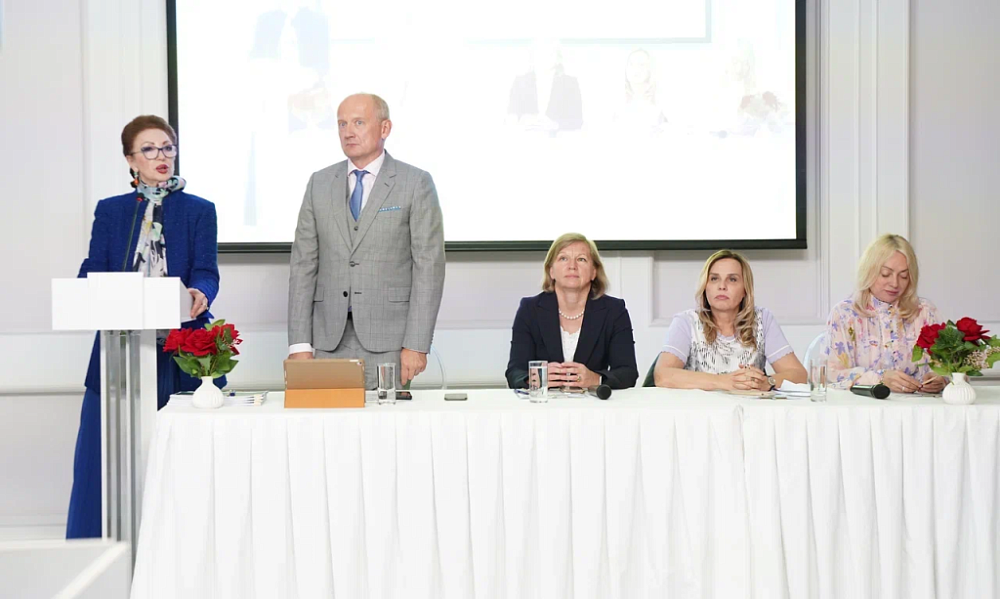
Reproductive health is the key to a couple’s well-being

In recent years, women’s and men’s health has been increasingly gaining focus as one of the factors not only in the quality of life of patients, but also in the reproductive potential of the country. Various gynecological and urological diseases can significantly affect the well-being of a couple’s reproductive health. For example, endometriosis is observed in approximately 50% of women with infertility, as revealed by leading experts at scientific conferences today.
Thus, Leyla Adamyan, Academician of the Russian Academy of Sciences, D.M.Sc., Professor, Chief Specialist in Gynecology of the Ministry of Health of the Russian Federation, during the seminar titled “Sexual health of couples. Liberation from the chains of endometriosis and pelvic inflammatory diseases (PID)” noted that every tenth patient of reproductive age suffers from endometriosis today. Moreover, in 60% of cases, external genital endometriosis causes the development of adhesions in the pelvis, leading to impaired fertility.
Experts are searching for therapeutic strategies aimed at preventing the development of endometriosis, combating the development of fibrosis and pelvic pain syndrome. But gynecologists are concerned not just with endometriosis, which is a chronic disease, but also with another serious problem. Leyla Adamyan shared WHO data that 448 million new cases of pelvic inflammatory diseases (PID) are being registered worldwide. The speaker noted that PID leads to serious negative consequences: chronic pelvic pain, infertility, premature birth; according to studies, they also increase the risk of cervical tumors and hyperproliferative diseases[1], [2].
Pelvic inflammatory diseases are polymicrobial in nature and involve various microorganisms that form bacterial biofilms, which make antibiotics less effective. Approximately 65-80% of human bacterial infections are related with the formation of biofilms[3]. Patients need therapy that destroys the biofilm matrix, which helps antibiotics reach the lesion and improve therapeutic result.

The same problem was highlighted by the speakers at the 24th All-Russian Scientific and Educational Forum “Mother and Child”. Natalya Tapilskaya, Head of the Gynecology and Endocrinology Department of FSBSI “The Research Institute of Obstetrics, Gynecology And Reproductology named after D.O. Ott”, D.M.Sc., Professor, said that according to a number of studies, the use of bovhyaluronidase azoximer (Longidaza) can reduce the isolation rate of bacteria that form biofilms:
But it is not just biofilms that pose a danger to women’s health. Inflammatory diseases, surgery, hemorrhage into the abdominal cavity and proliferation of the intrauterine epithelium (for example, associated with endometriosis) contribute to the development of adhesions (plaits and strands that pull various organs together and disrupt their natural anatomy).
Guldana Bayramova also pointed out the results of using the bovhyaluronidase azoximer molecule in patients with severe adhesions:
1https://static-0.minzdrav.gov.ru/system/attachments/attaches/000/059/732/original/2022-19-7.pdf?1653472570.
2 Chiou WY, Chen CA, Lee MS, Lin HY, Li CY, Su YC, Tsai SJ, Hung SK. Pelvic inflammatory disease increases the risk of a second primary malignancy in patients with cervical cancer treated by surgery alone. Medicine (Baltimore). 2016 Nov;95(47):e5409. doi: 10.1097/MD.0000000000005409. PMID: 27893679; PMCID: PMC5134872.
3J. W. Costerton, «Cystic fibrosis pathogenesis and the role of biofilms in persistent infection», Trends Microbiol, т. 9, вып. 2, сс. 50–52, фев. 2001, doi: 10.1016/s0966-842x(00)01918-1.


